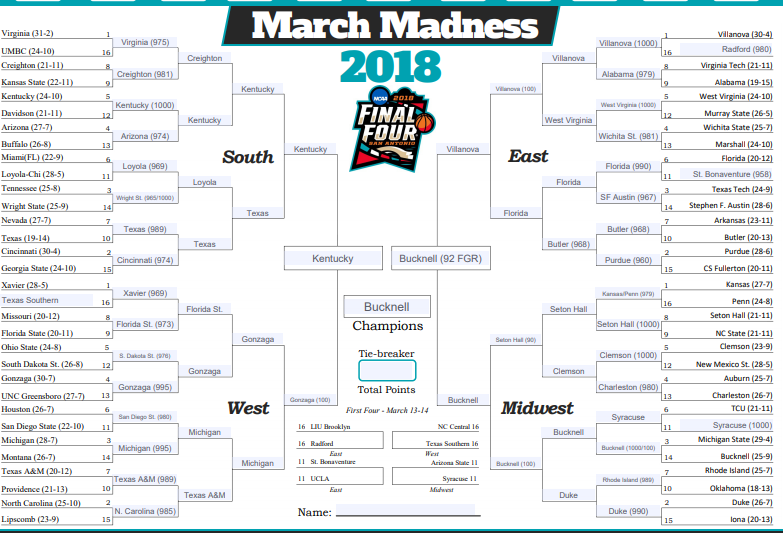You have /5 articles left.
Sign up for a free account or log in.
In a year in which the National Collegiate Athletic Association's Division I men's basketball tournament threatens, more than usual, to be tinged by scandal and questions about the sport's future, Inside Higher Ed offers its annual antidote: a look at how the tournament would unfold if teams' academic acumen mattered more than their skill on the court.
A tradition since 2006, our Academic Performance Tournament determines the winners of each game in the tournament by comparing the academic performance of teams, as measured by the NCAA's own -- admittedly less than perfect -- metrics for judging academic success.
We first look to the academic progress rate, the NCAA's multiyear measure of a team's academic performance. (Among other things, the APR excludes athletes who leave in good academic standing, so high-octane programs where players tend to go pro early can still fare well on the measure.)
When two teams tie, we turn to the NCAA's graduation success rate, which measures the proportion of athletes on track to graduate within six years. In the event of a tie on that metric, we then turn to the federal graduation rate, a different formula that the government uses to track graduation rates.
There were some unusual "games" this year, with a total of nine programs with perfect APR scores of 1000 creating a larger than usual number of ties, including two that went to the federal graduation rate as a third-level tiebreaker.
Click here  to see who emerges the winner of this year's Academic Performance Tournament. And as always, fun as it is, we don't recommend using Inside Higher Ed's bracket as the basis for your office pool.
to see who emerges the winner of this year's Academic Performance Tournament. And as always, fun as it is, we don't recommend using Inside Higher Ed's bracket as the basis for your office pool.
Please follow me on Twitter @dougledIHE.









